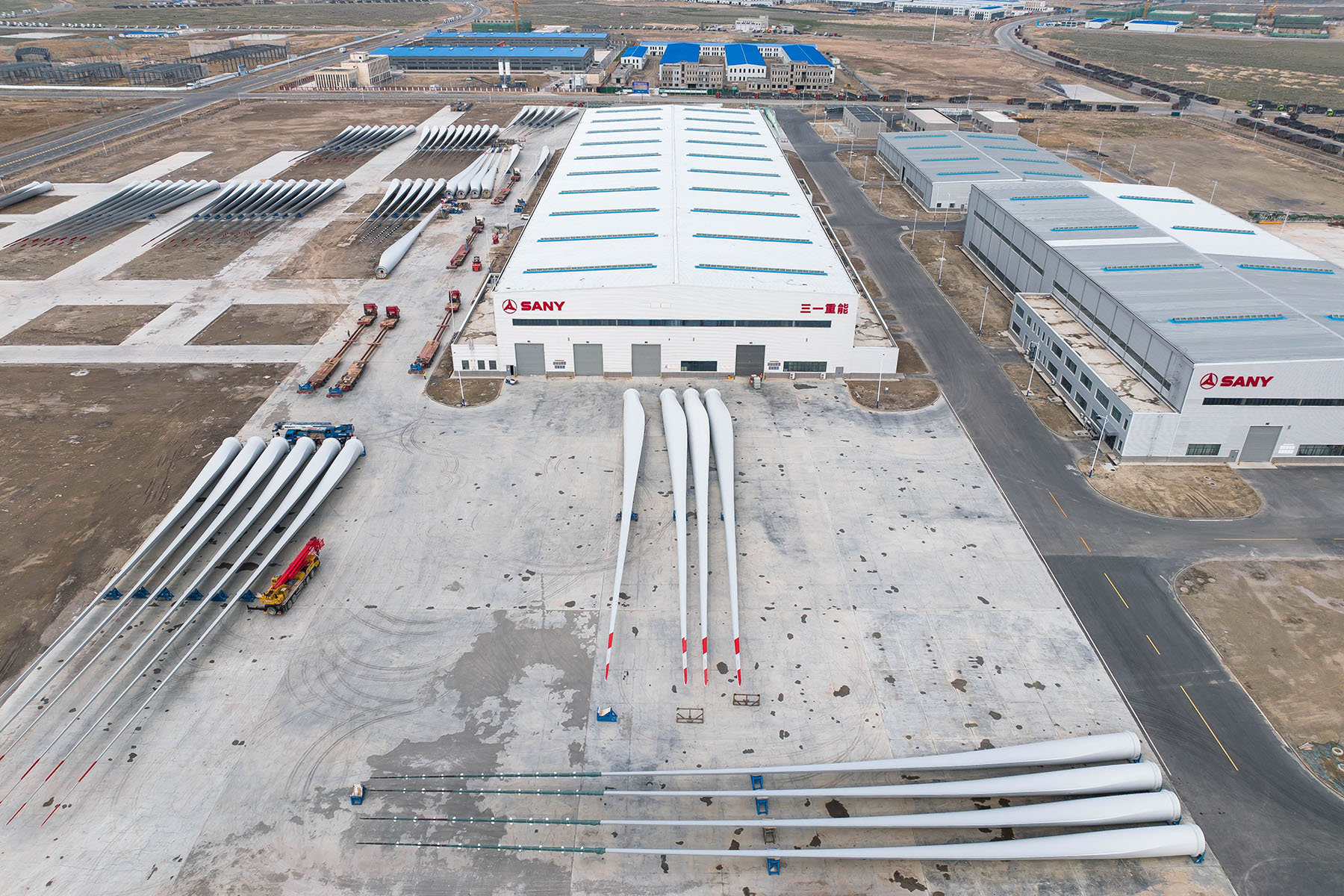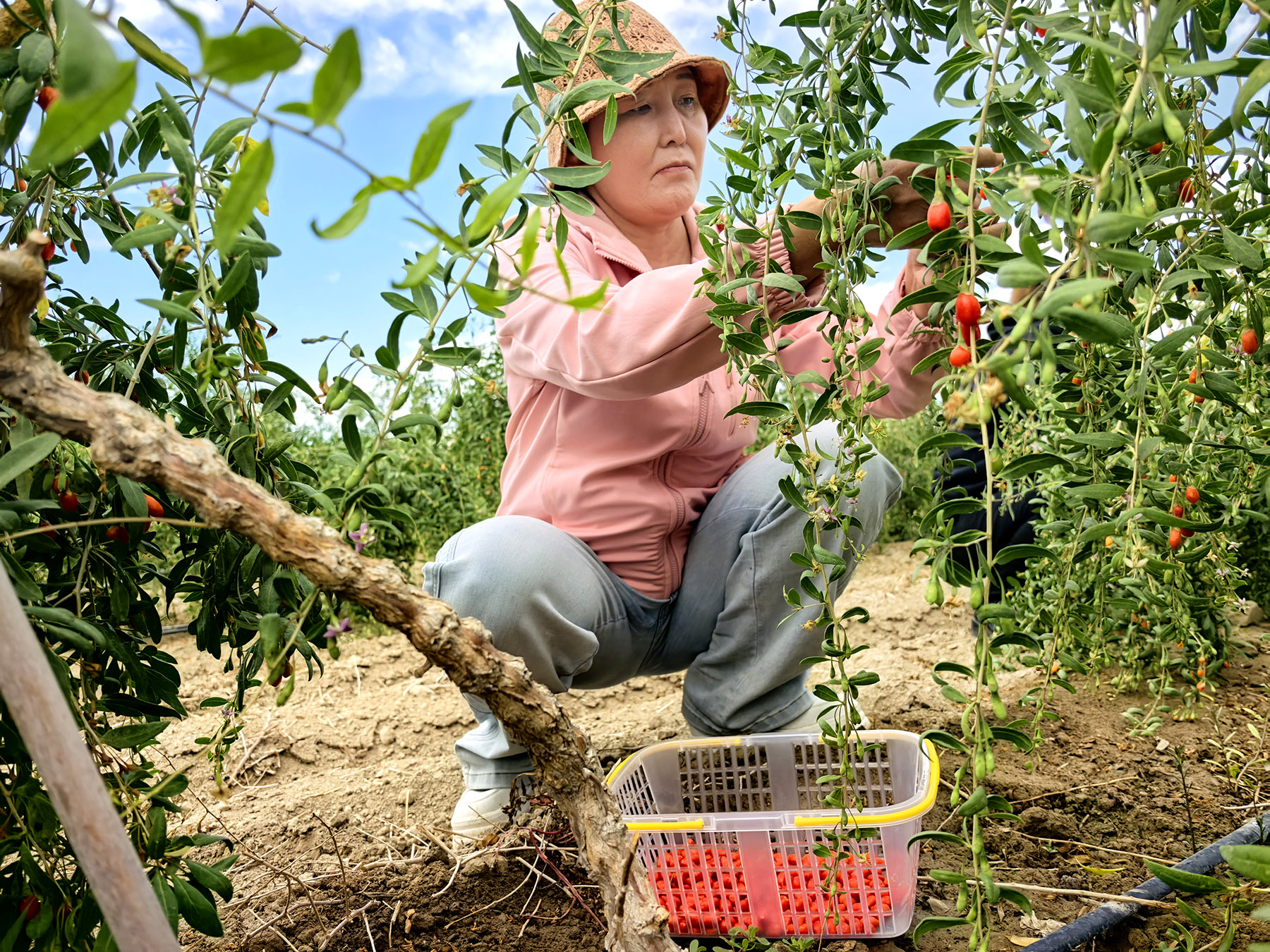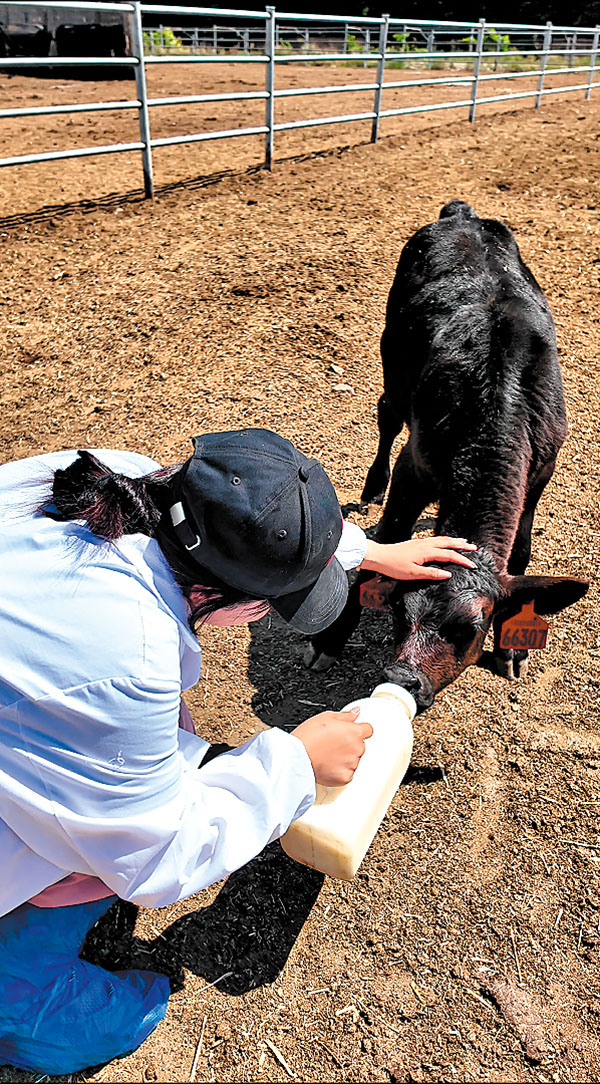Scientific approaches improve beef; goji berries and cotton raise villagers' livelihoods

In the sheds of Tianlai Livestock Group in Bole, Xinjiang Uygur autonomous region, cattle are raised in comfort and "live a happy life".
They drink temperature-controlled water, feed on organic grains and wear smart collars that track their health around the clock. Some are even massaged to relieve itches and improve circulation. These measures aim to not only build a domestic premium beef brand, but also lift farmers' incomes and drive rural vitalization in the region.
As the only beef enterprise in China with organic certification covering the entire production chain, Tianlai manages procedures from forage cultivation and cattle breeding to processing and sales. Its 6,667-hectare organic feed base and national breeding stations in the Bortala Mongolian autonomous prefecture mainly supply high-quality Angus and Hereford beef.
READ MORE: Ethnic unity powering social progress, prosperity
The beef products have been supplied to major sports events such as the 19th Asian Games in Hangzhou, Zhejiang province, and the FISU World University Games 2023 in Chengdu, Sichuan province, according to Bole's agriculture and rural affairs bureau.

Fu Qiang, head of the bureau, said Tianlai has introduced more than 15,000 high-quality cattle and involved several thousand local households in breeding better cattle varieties. "Efforts are being made to link leading enterprises with farmers and herders. We have explored various cooperative models to ensure benefits for farmers," Fu said.
As China's beef market has faced volatility, with prices falling to decade-low levels in 2024, the largest cattle breeding company in northwestern China has prioritized quality products. By focusing on high-quality beef, it has shielded its supply chain and created new opportunities for herders, said Wang Chuang, head of Tianlai's processing division.
"I'm confident that the quality of our beef is not inferior to any imported product," Wang said. "More importantly, our model ensures that farmers can steadily increase their income."

Through its "distributed farming "model, more than 4,000 households in the prefecture now raise cattle under Tianlai's guidance. Farmers typically raise calves to a weight of 200 to 400 kilograms, with standardized feed provided by the company. Tianlai then buys back the animals at guaranteed prices and raises them to full size at its facilities.
"The system stabilizes earnings for farmers while ensuring we have a reliable supply chain," Wang said. A farmer raising 200 cattle can see annual profits of about 200,000 yuan ($28,000) under the model, he added.
The model is helping unlock the potential of Xinjiang's vast grasslands, said Bahargul Aytan, vice-mayor of Bole.
"Tianlai is not only a leading enterprise but also a key driver of rural vitalization in the region. By anchoring production locally, it provides a solid industrial foundation for farmers to prosper," she said.

Dual approach
In Jinghe county, about 100 kilometers east of Bole, cultivation of cotton and goji berries is bringing fresh vitality to villages long rooted in farming traditions.
This month, harvest season for the county's 73,000 hectares of cotton started, with 230 cotton pickers working in the fields to bring the fluffy bolls home before November.
In Shartur village, one of Jinghe's oldest cotton-growing areas with more than 40 years of cultivation, harvest time means fierce competition among buyers eager to secure high-quality cotton.
"Seed selection, field management, and scientific fertilization are key to better yields," said Ding Hongshan, a local farmer who manages more than 6.67 hectares of cotton. "Now, with guidance from experts and new equipment, it takes just 10 hours to harvest over 6.67 hectares," he said.
In 2025, the yield of his fields is expected to reach an above-average ratio of 7.5 metric tons per hectare, generating him annual net income of around 100,000 yuan.

Agricultural specialists from the prefecture regularly provide farmers with tailored advice, Ding said. With technical knowledge and mechanization applied in the fields, cotton has become a pillar crop, securing incomes and financial stability for villagers.
Apart from cotton, September also sees the harvesting of goji berries. Earlier this month, Dilnur, a farmer in Jinghe, filled her basket with the bright red berries.
In autumn, she picks around 20 kilograms a day earning her over 100 yuan. "In summer, the income can climb to 200 or 300 yuan a day," she said.
Beyond picking, she livestreams goji berry products on video platforms such as Douyin and Kuaishou, selling to buyers in southern Xinjiang.
According to the Jinghe Agriculture and Rural Affairs Bureau, 28.75 tons of fresh goji berries were sold last year fetching an average price of 126 yuan per kg, greatly increasing local farmers' incomes.
Du Yongjun, a villager in Jinghe, said growing both goji berries and cotton made it possible for him to raise two daughters and send them to university. Both have landed good jobs in cities in Xinjiang.
"I earned 20,000 yuan from growing goji berries and about four times more from cotton fields each year, which was enough to support two college students," Du said.
At present, more than 40 varieties of goji berry-based health and leisure products, including juice, tea, beer and noodles, have been developed in Jinghe. They are sold in domestic markets and overseas countries including Indonesia and Brazil, according to local authorities.

Tourism riding high
While cattle farms and cotton fields showcase how modern agriculture and specialty industries are strengthening the region's economic basis, Xinjiang's rural vitalization is also being fueled by cultural and tourism development thanks to its rich natural resources and ethnic groups.
From the shores of Sayram Lake, where herders on horseback now welcome visitors, to literary landmarks in Yining city that draw readers and students, tourism has become a new driver of income and cultural exchange.
For Aydabek, a Kazakh herdsman born and raised on the grasslands near Sayram Lake, the booming tourism industry around the scenic spot has changed his life. He is now a member of a team offering tourists horse-riding experiences and a taste of the culture of the Kazak ethnic group.
"We Kazaks are a people on horseback. Each summer, from June to August, is the busiest time. On average, our team receives 300 to 400 visitors a day, and all 20 horses are kept busy," he said, adding that he no longer herds sheep. His income has grown by 30,000 to 40,000 yuan a year.
As of early September, tourist arrivals at Sayram Lake this year had reached 6.37 million, according to local authorities.

In Bayandai village, Ili Kazak autonomous prefecture, the Wang Meng Library was built in 2013 to honor the renowned writer who lived in the town for six years.
With more than 20,000 books, it has become the heart of local tourism. Last year, over 100 activities including reading salons and poetry recitations were held there.
Ma Yan, a local resident, said she and her husband decided to turn an idle house into a homestay as more visitors arrived.
ALSO READ: Premium cotton crops, prices unravel false claims
"Especially in recent years, tourism has really boomed. Many travelers who come for the Wang Meng Library or his former residence stay in our guesthouse," she said, adding that the eight rooms of their homestay can bring the family an annual income ranging from 100,000 to 200,000 yuan.
In summer, a teacher from Shanghai brought three students to Xinjiang for a study tour after reading Wang Meng's In Ili, a series of works that Wang wrote between 1983 and 1984 based on his life experiences.
They not only visited the library but also joined local children at Ma's homestay for a reading. "The children read the book together, shared stories and built friendships," Ma said.
The village has nearly 20 such homestays, greatly contributing to a collective income of 2.4 million yuan last year, according to village officials.
Contact the writer at zhaoyimeng@chinadaily.com.cn


